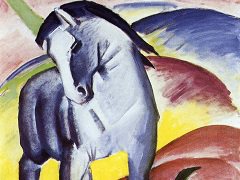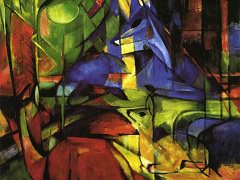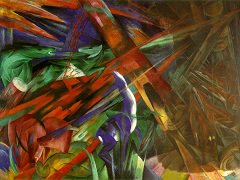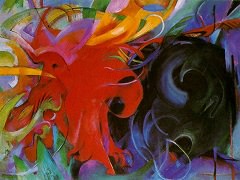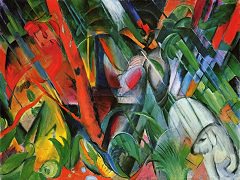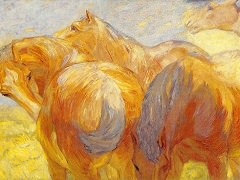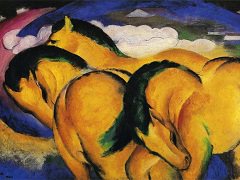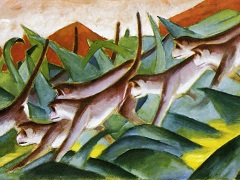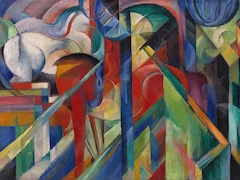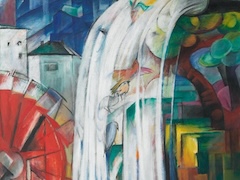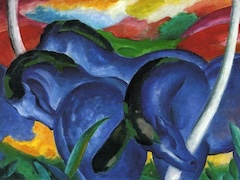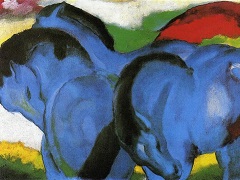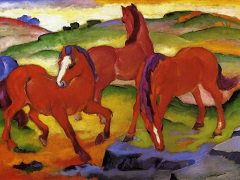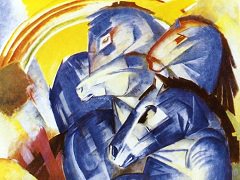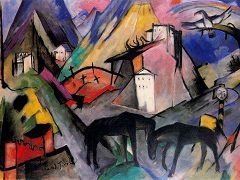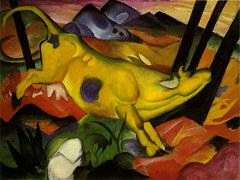Animals in Landscape by Franz Marc
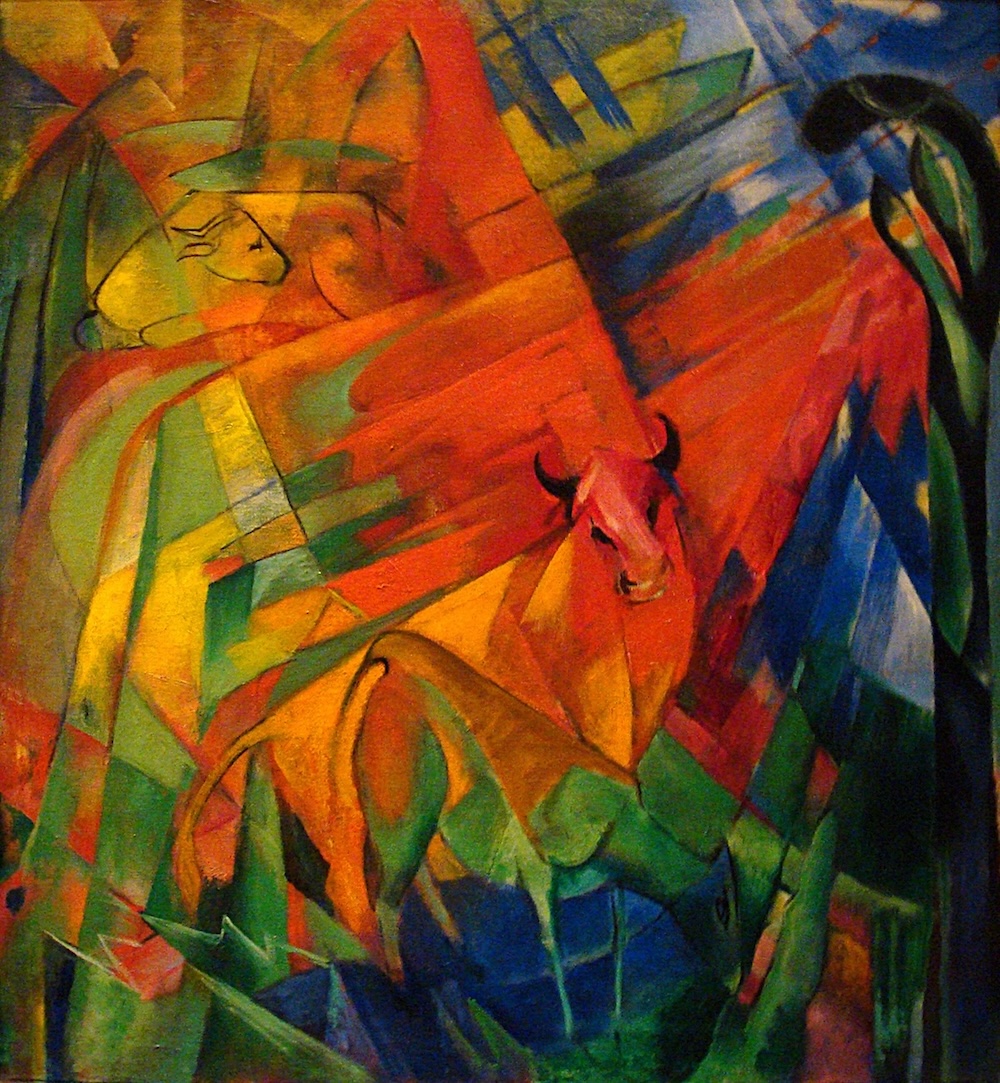
The often-cited quotation by Marc, stating his belief that animals are purer and more beautiful than man, begins to explain why he chose to focus on animals for the majority of his artistic output. It should be noted that Marc was a deeply religious person and that he is said to have spoken in terms of "pantheistic empathy" with regard to his objectives in representing animals and nature. The notion of beauty being equated with God and God being present in nature does have a precedent in the history of art. The Italian Renaissance artist Michelangelo Buonarroti (1475-1564) was influenced by the Neo-Platonic notion that beauty equated to God, that the human figure was the most beautiful form and, thus, that God revealed himself through the human figure. Michelangelo's paintings reflected his personal beliefs, and hence the human figure is the most prominent motif in his oeuvre. Closer in time to the work of Marc is that of the German Romantic landscape artist Caspar David Friedrich (1774-1840), in whose work some scholars have identified characteristics that are similar to Marc's in terms of Romantic sensibilities. The idea of landscapes being a manifestation of the Divine is a strong characteristic of Friedrich's work. The transcendental quality that landscapes held for him can be best demonstrated with Animals in Landscape. Animals are Marc's chosen means of expression just as the human figure was for Michelangelo and the landscape was for Friedrich. Again the importance of Niestlé's influence may be underlined here since Marc was primarily concerned with representing the spirit and thus the beauty of the animals, in order to represent a sense of the pantheistic.


